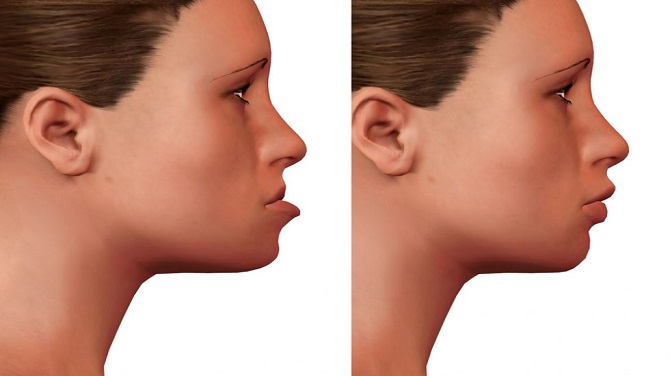Undergoing oral and maxillofacial surgery in Islamabad can be a significant step toward addressing complex dental and facial issues. However, managing pain and swelling post-surgery is crucial for a smooth recovery and optimal results. This guide provides practical strategies and tips to help you effectively handle these common post-operative challenges.
Understanding Post-Surgical Pain and Swelling
What Causes Pain and Swelling?
After oral and maxillofacial surgery in Islamabad, pain and swelling are common responses to the surgical process. These reactions are part of the body's natural healing mechanism but can be uncomfortable.
- Inflammatory Response: Surgery triggers an inflammatory response, leading to swelling as blood vessels expand to deliver healing nutrients.
- Tissue Trauma: Surgical manipulation can cause temporary pain and discomfort in the affected area.
- Healing Process: As your body heals, it produces extra fluid and white blood cells, contributing to swelling and soreness.
Importance of Effective Pain and Swelling Management
Managing pain and swelling effectively is essential for:
- Comfort: Reducing pain helps improve overall comfort during the recovery period.
- Healing: Proper management can accelerate the healing process and reduce complications.
- Functionality: Minimizing swelling ensures that you can resume normal activities and functions sooner.
Immediate Post-Operative Care
Applying Ice Packs
One of the most effective methods for reducing swelling is the application of ice packs.
- Frequency: Apply ice packs to the affected area for 15-20 minutes every hour during the first 24-48 hours.
- Method: Use a cloth or towel to prevent ice burns. Alternate between ice and rest periods.
- Benefits: Ice helps constrict blood vessels, reducing swelling and numbing the pain.
Keeping Your Head Elevated
Maintaining an elevated head position can also help minimize swelling.
- Position: Keep your head elevated using pillows while lying down or sleeping.
- Elevation: Aim for a 30-45 degree angle to reduce fluid accumulation in the surgical area.
- Benefits: Elevation helps decrease swelling and improves circulation.
Pain Management Techniques
Prescribed Medications
Following your surgeon's recommendations for pain relief medications is crucial.
- Types of Medications: Your surgeon may prescribe painkillers or anti-inflammatory drugs.
- Dosage: Follow the prescribed dosage instructions carefully to manage pain effectively.
- Adherence: Take medications as directed to prevent breakthrough pain and ensure consistent relief.
Over-the-Counter Remedies
In addition to prescribed medications, over-the-counter options can complement pain management.
- Acetaminophen: Effective for mild to moderate pain relief.
- Ibuprofen: Provides anti-inflammatory benefits and additional pain relief.
- Consultation: Always consult your surgeon before taking any new medications.
Dietary and Lifestyle Adjustments
Eating Soft Foods
Post-surgery, opting for soft foods can reduce discomfort and aid healing.
- Types of Foods: Choose mashed potatoes, soups, yogurt, and smoothies.
- Avoidance: Steer clear of hard, crunchy, or spicy foods that may irritate the surgical site.
- Hydration: Drink plenty of fluids to stay hydrated and support recovery.
Avoiding Strenuous Activities
Limiting physical exertion is essential for a smooth recovery.
- Rest: Avoid heavy lifting, strenuous exercise, or any activities that increase blood pressure to the head.
- Recovery Time: Allow your body adequate time to heal before resuming normal activities.
- Benefits: Resting helps prevent complications and promotes faster healing.
Recognizing and Addressing Complications
Signs of Infection
While managing pain and swelling, be vigilant for signs of infection.
- Symptoms: Look out for increased redness, warmth, or discharge at the surgical site.
- Action: Contact your surgeon immediately if you notice any symptoms of infection.
- Prevention: Follow all post-operative care instructions to minimize infection risk.
Persistent Swelling or Pain
If swelling or pain persists beyond the expected time frame, seek medical advice.
- Duration: Some discomfort is normal, but persistent symptoms may indicate complications.
- Consultation: Schedule a follow-up appointment with your surgeon to address ongoing issues.
- Reassessment: Your surgeon can reassess your condition and adjust your treatment plan if necessary.
Long-Term Care and Maintenance
Following Post-Operative Instructions
Adhering to your surgeon’s instructions is critical for long-term success.
- Guidelines: Follow all post-operative care instructions regarding medication, diet, and activity restrictions.
- Compliance: Consistent adherence helps prevent complications and ensures optimal results.
- Benefits: Proper care promotes faster recovery and better surgical outcomes.
Attending Follow-Up Appointments
Regular follow-up appointments are essential for monitoring your progress.
- Scheduling: Keep all scheduled appointments with your oral and maxillofacial surgeon.
- Evaluation: Your surgeon will evaluate your healing progress and make any necessary adjustments to your care plan.
- Importance: Follow-ups help ensure that any potential issues are addressed promptly.
Final Thoughts
Managing pain and swelling after oral and maxillofacial surgery in Islamabad is a critical aspect of the recovery process. By following the strategies outlined in this guide, you can enhance your comfort, support healing, and achieve the best possible results from your surgery.
For personalized care and expert advice on managing your post-surgical recovery, consider visiting Royal Cosmetic Surgery. Our experienced team is dedicated to providing exceptional care and ensuring a smooth and successful recovery for all our patients.





Comments